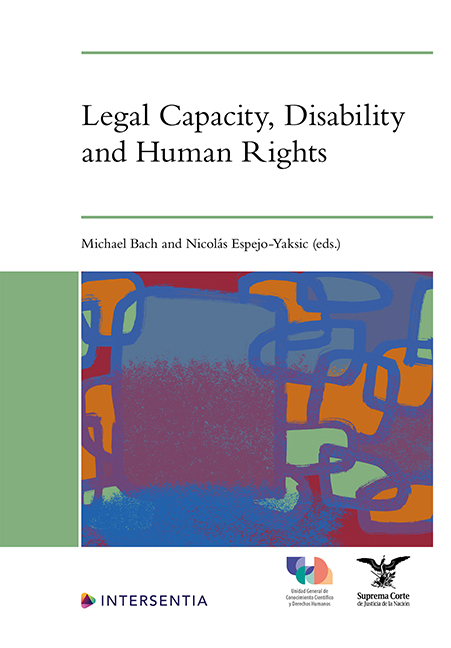Book contents
- Frontmatter
- Foreword
- Acknowledgements
- Contents
- List of Cases
- List of Contributors
- Legal Capacity, Disability and Human Rights: Introduction
- PART I HISTORICAL PERSPECTIVES AND THEORETICAL FRAMES
- PART II LAW REFORM: COUNTRY AND REGIONAL PERSPECTIVES
- PART III LEGAL QUESTIONS, PERSISTENT CHALLENGES
- Index
- About the Editors
Legal Capacity, Disability and Human Rights: Introduction
Published online by Cambridge University Press: 03 April 2024
- Frontmatter
- Foreword
- Acknowledgements
- Contents
- List of Cases
- List of Contributors
- Legal Capacity, Disability and Human Rights: Introduction
- PART I HISTORICAL PERSPECTIVES AND THEORETICAL FRAMES
- PART II LAW REFORM: COUNTRY AND REGIONAL PERSPECTIVES
- PART III LEGAL QUESTIONS, PERSISTENT CHALLENGES
- Index
- About the Editors
Summary
The United Nations Convention on the Rights of Persons with Disabilities (hereinafter CRPD) recognises in its Article 12 the equal right to exercise legal capacity with out discrimination based on disability. In addition, the CRPD establishes the obligation of the States parties to ensure access to the supports a person may require for decision-making. Since its adoption, there has been a growing effort by the United Nations Committee on the Rights of Persons with Disabilities, domestic human rights courts, legal and policy researchers, and activists to critically examine the laws that restrict or nullify the exercise of legal capacity based on disability. Traditionally, this effort has focused on reforming those constitutional or legal standards regulating the exercise of legal capacity: laws on interdiction and guardianship or substitution of decision-making and mental health laws.
However, a fuller examination of legal capacity reforms or transformations reveals a wide range of laws, jurisprudence and administrative regulations. Analysed jointly, these sources constitute a patchwork of provisions that regulate legal capacity in many different directions: from a particular individual decision – medical care, inheritance, matrimonial or cohabitation arrangements – to how an entire population is labelled and treated by laws and policies, for example, people with intellectual disabilities or people diagnosed with a “mental disorder.” Together, this multiplicity of norms, provisions and rules regulate the exercise of legal capacity in a wide range of settings – for example, in making health care decisions or exercising personal care decisions in a long-term care facility, in financial decisions, in contracting goods and services, in transacting in labour and housing markets, in pursuing justice – for instance, appearing before a tribunal to appeal a decision, meeting capacity requirements to be a witness or stand trial or file a complaint about the violation of one's rights, and in political participation such as exercising the right to vote. Accordingly, the processes of legal capacity reform require a comprehensive view, with attention not only to historical, social and legal contexts, but also to the vast regulatory regime in any particular jurisdiction and the array of institutional arrangements which permeate it.
- Type
- Chapter
- Information
- Legal Capacity, Disability and Human Rights , pp. 1 - 2Publisher: IntersentiaPrint publication year: 2023

